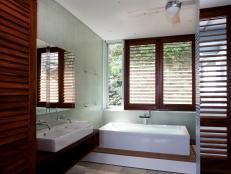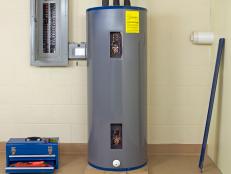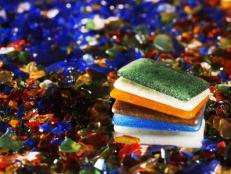Reusing Household Water With Graywater Systems

According to the EPA, the average family of four uses 400 gallons of water a day – 146,000 gallons a year. That's a lot of water that quickly runs down the drain! However, much of the water used is clean enough to easily be treated and reused for non-potable (non-human consumption) purposes, such as gardening, flushing toilets, and exterior or clothes washing. Approximately 50 percent of the water households use annually (73,000 gallons per year) can be recycled and reused. In addition to saving homeowners significant cost in municipal water charges and reducing the demand on freshwater supply, the 73,000 gallons of freshwater saved each year is enough to provide drinking water for more than 300 thirsty people – per year.
Anyone who has spent time in a recreational vehicle probably understands the concept of gray and black water. Black water comes from toilets and must be flushed straight to the sewer. Water that comes from the bathtub, shower, sinks, laundry and dishwashers is known as graywater. Some graywater (from kitchen sinks, clothes and dishwashers) isn't easily recyclable because of the content of the water. Graywater that is easily recyclable (from bathtubs, showers and bathroom sinks) is relatively "clean," containing few if any pathogens and 90 percent less nitrogen than black water. Therefore it requires very little treatment before it can be reused for non-potable purposes.
Simple changes in plumbing system design can allow graywater to be separated from black water and run into a treatment system for reuse. Installing graywater systems in new homes during construction is easy, but it can be significantly more difficult to retrofit existing homes. According to the Department of Housing and Urban Development's Partnership for Advancing Technology in Housing (PATH) Program, the initial cost of installing a graywater reuse system in a new home ranges from approximately $500 to $2,500, depending on local code requirements for the treatment of graywater. If a monthly treatment and testing contract with an outside company is required, those costs may run $30 to $75 per month.
A PATH Concept Home features a graywater system called Pontos from Hansgrohe – the first use of this product in the United States. The plumbing in the home directs recyclable greywater into the system, which filters and sterilizes it without use of chemicals and directs it for storage and use in exterior washing, watering, and clothes washing. Water is first filtered for "big items" such as hair, then treated by special biocultures in a second chamber. A UV light sterilizes the water before it is stored. For ease of maintenance, the filter in the system is automatically flushed periodically, and sediment is deposited in the black water drain.
The bioculture and UV light treatment makes this system truly "green"; it uses no chemicals. For more information on the Pontos system, visit the Hansgrohe website.
There's a kicker to the proper installation and use of a graywater system. Because the cost savings of such a system equates to $5 to $20 a month at best, and some systems can be overbuilt, it's very important to ensure that a system is designed minimally for homeowners' use. Why? Because if the system is very expensive, the consumer is better off from a cost standpoint to buy the extra municipal water. And if the system is overbuilt with valves, pumps, fittings and piping, the theoretical environmental impact of the water savings is negated.
That said, properly designed graywater systems have the potential to dramatically reduce reliance on fresh water and to pay for themselves over a reasonable period of time. Combined with simple strategies to reduce water use, graywater systems in new construction provide a real win for homeowners and the environment.
Stacy Hunt is a consultant and freelance writer who specializes in building science and green building. She is the former business manager of BuildIQ.










































